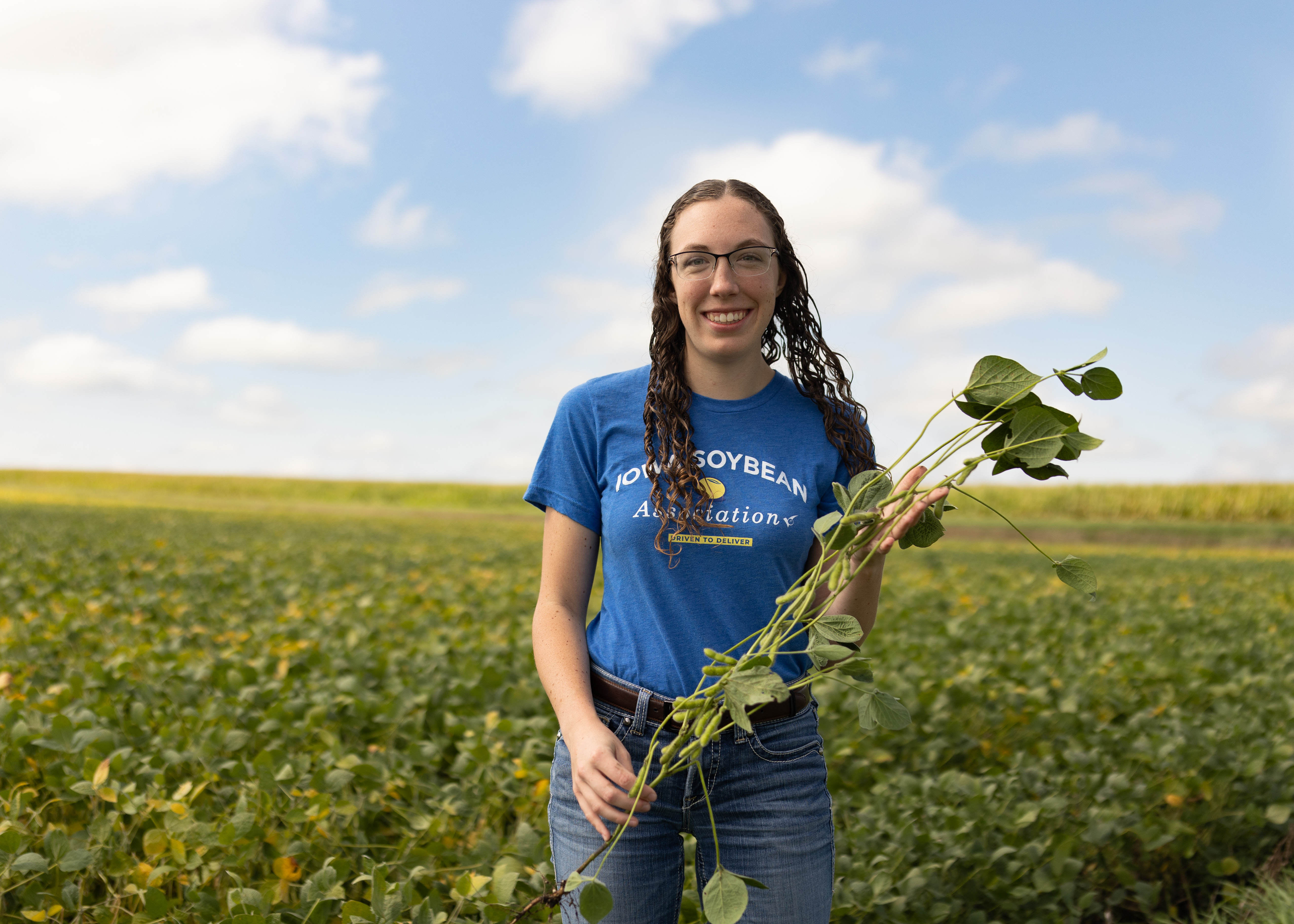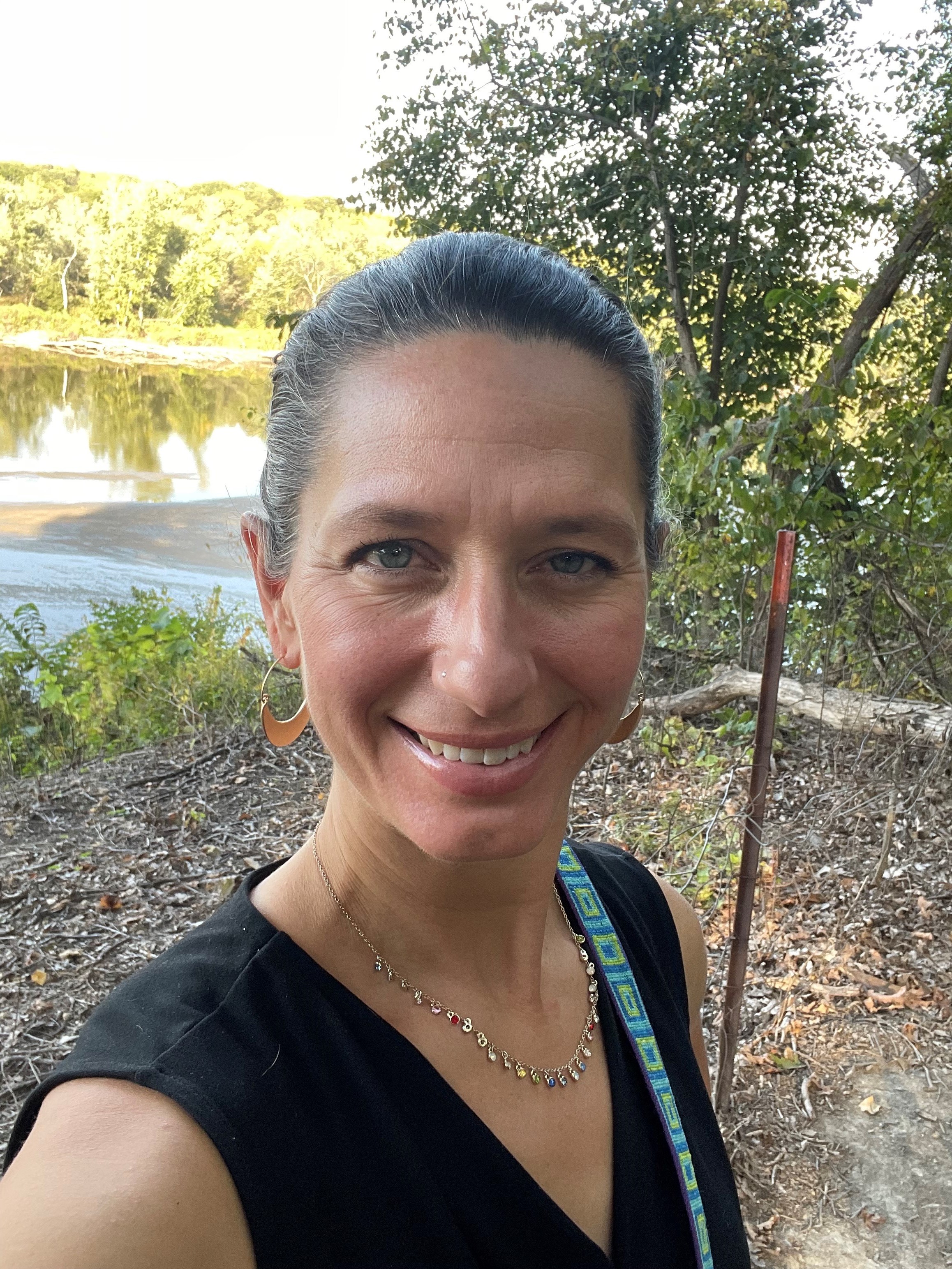By Kaitlin Little, IAWA (Published March 8, 2022)
From the tractor to the board room, Iowa women are helping to solve the state’s water quality challenges while pioneering new strategies and new careers. On International Women’s Day, Iowa Ag Water Alliance is celebrating their success.
When Rosie Roberts studied agriculture at Iowa State University, her position didn’t even exist yet.

Now, she’s paving the way for water quality as the first conservation agronomist at Cooperative Farmers Elevator.
“I’m pioneering this program up here where nobody knows what a conservation agronomist is yet,” Roberts said.
Roberts works with both the Iowa Soybean Association (ISA) and Cooperative Farmers Elevator. The position is funded through an IAWA-led grant.
“I’m able to help bridge the gap between agronomy and conservation,” said Roberts.
As a conservation agronomist, she helps farmers to make decisions that not only improve the farmers’ bottom line but also improve water and soil health.
Roberts works in northwest Iowa in Sioux, Lyon, Dickinson, Osceola, and O’Brien counties. Sioux and Lyon counties lead the state in livestock production, so manure is a main fertilizer source for some farmers. One way that Roberts is making an impact is helping these farmers get the most out of the manure they apply using the right rate at the right time in the right place, which is part of the 4R approach.
Roberts is one of only a handful of conservation agronomists in the state, but the number is growing. They’re part of a statewide push to reduce nutrients in Iowa’s water.
To achieve the nutrient reduction goals laid out in the Iowa Nutrient Reduction Strategy, it is estimated that Iowa farmland will need a total of 10.5 million acres of no-till and strip-till, 12.5 million acres of cover crops, 7,600 nutrient removal wetlands, and 120,000 bioreactors and saturated buffers. While progress is being made, the scale-up remains a challenge.

From a young age, Mary Beth Stevenson knew she wanted her work to make an impact on the environment. She grew up in Ohio and spent summers with her family kayaking and swimming in lakes and rivers, helping on her grandparents’ farm, and tending to the roses in her grandpa’s garden.
This passion for the outdoors guided her towards her work today as the Watersheds and Source Water Program Manager for the city of Cedar Rapids.
“I appreciate the leadership here in Cedar Rapids because they respect our partnerships, support our work, and provide resources for our programs,” Stevenson said.
Stevenson believes the watershed approach Cedar Rapids has taken is the way forward for cities that are trying to solve their water quality and flooding issues.
“I think eventually a lot more cities are going to realize the benefits of having a watershed staff person who can provide the focus and drive that is needed to get our conservation work done,” said Stevenson.
Currently, she is leading the city’s work on their second Regional Conservation Partnership Program, the Cedar River Source Water Partnership.
The project will work at the watershed scale and includes funding for farmers who are interested in installing conservation practices like cover crops, wetlands, saturated buffers, and bioreactors. It will also fund a conservation agronomist position in partnership with Linn Coop.
Stevenson shared, "I'm not the kind of person that has a wait and see attitude. I want to see things happen now. That's what makes being part of getting another project on the ground so great."
